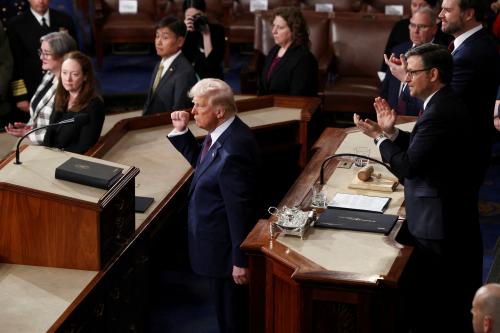The White House is the obvious place to start putting the pieces in place that will define your administration. How do you wish to organize your staff? In what order should you make the appointments? Consider the degree of tension that you want to build into your system. What are the qualities you need in your key assistants? As you make these and other decisions, the nation and the world will be assessing the rightness of your first moves.
Staffing the White House
In the days before you become president of the United States (or POTUS, as we say “inside the Beltway”), the government may look like rows of empty offices waiting to be filled with your loyal supporters. This is not quite the case. Of the two million civilian employees in the U.S. government, you will get to pick about 3,000 of them. Moreover, the most important appointees will require confirmation by the U.S. Senate.
Let’s get started at the top.
##1##
The White House Office
The nerve center of the Executive Office of the President is the White House Office (WHO). It is imperative to choose certain White House officials immediately in order to move forward efficiently with the staffing process—from selection to confirmation—that shapes your administration. Many problems of the Clinton transition arose because the president-elect—consumed, as he stated in his memoirs, with “micromanaging the cabinet appointments”—failed to appoint his White House staff, except for Chief of Staff Thomas F. McLarty, until six days before taking office.
The key positions that you must quickly fill are:
• Chief of staff
• Personnel director
• Counsel
• Press secretary
• Congressional relations chief
• Speechwriters
Chief of Staff
##2##Presidents usually designate one assistant their primus inter pares (Latin for “first among equals”), the PIP, in our shorthand. The PIP most often has the title “chief of staff”—but not always. Sherman Adams in the Eisenhower administration was “the assistant to the president” (with emphasis on “the”), and President Kennedy’s PIP, Ted Sorensen, was “special counsel.” Presidents Ronald Reagan and George W. Bush have had what amounted to multi-person PIPs. But titles and numbers matter much less than the PIP’s dual responsibility to keep the president’s policies moving forward while trying to keep him out of trouble. The PIP is the one job you will hopefully have picked—but not announced to the press—before the election.
The PIP is your fail-safe mechanism, the last redoubt between you and a misstep. If the PIP does not know the location of all the traps that will be set for you in the capital, you are likely to get ensnared. This ability should be the key qualification of the PIP; the rest—the public relations skills or policy development skills—can be brought into the White House in subordinate positions, if necessary.
The Brookings Institution is committed to quality, independence, and impact.
We are supported by a diverse array of funders. In line with our values and policies, each Brookings publication represents the sole views of its author(s).



Commentary
What Now? Staffing the White House
November 10, 2008